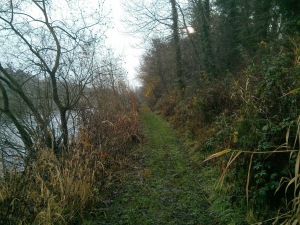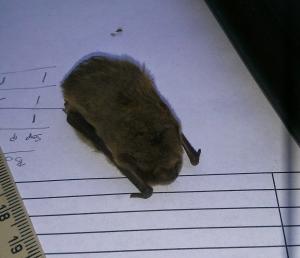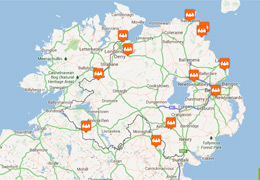
The boxes are placed in perfect habitat
The inspection team heads north
Thanks to funding from the Heritage Lottery Fund, and time donated by Bat group volunteers, the weekly inspection of bat boxes continues. Over the last two weeks, the volunteers have moved north to the Coleraine area. Lately, two riverside locations have been checked for bat residents and signs of previous occupation in the bat boxes.
This Saturday, a foggy morning greeted the bat box volunteers. The river was high and there were wet conditions underfoot. Luckily, the weather was calm which allowed for safe ladder climbing.
As with most of the bat boxes erected over the summer, these have been erected in areas that previously had not had boxes before. The immaturity of the trees in these areas mean that the project is likely introducing roost space where previously such opportunities were unavailable. The riverside locations, trees and paths present excellent opportunities for foraging bats. The addition of bat boxes has improved the location even further.

Soprano pipistrelle found during the inspection
The first location yielded no actual bats. Bat droppings were found in some of the boxes, indicating that bats had at least been present at some time over the past few months. The second site proved much more interesting. Of the boxes inspected, two contained a small number of soprano pipistrelles snuggling within. As during other inspections, each bat was carefully checked to ascertain its sex, and to collect a few basic measurements.
Why not volunteer?
The inspection of bat boxes must be done by an experienced bat worker, working under a Licence issued by the Northern Ireland Environment Agency. If you want to see what’s in a bat box, why not volunteer? The bat group is always looking for people to help carry ladders and take notes to record the findings. The chat is always interesting and no previous experience is required. The only requirement is an interest in helping increase knowledge about our important population of bats and their roosting preferences.



